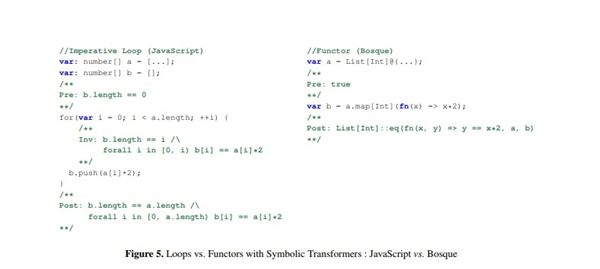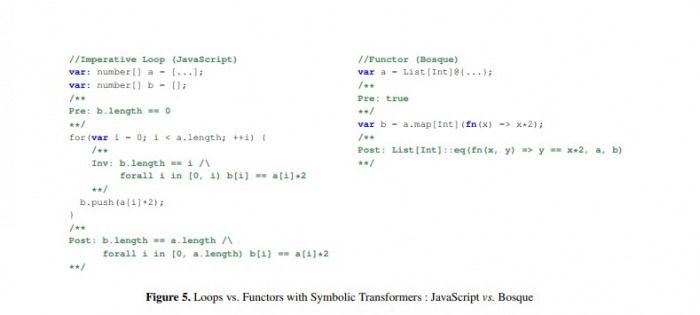常见的Spring中AOP应用方式深入解析
 发布于2024-11-05 阅读(0)
发布于2024-11-05 阅读(0)
扫一扫,手机访问
深入了解Spring中AOP的常见应用方式
引言:
在现代软件开发中,面向切面编程(AOP)是一种广泛使用的设计模式。它可以帮助开发人员实现横切关注点的关注点分离。在Spring框架中,AOP是一个强大的功能,可以方便地实现各种横切关注点,如日志记录、性能监测、事务管理等。本文将介绍Spring中AOP的常见应用方式,并提供具体的代码示例。
一、AOP概述
AOP是一种编程范式,它通过在运行时动态地将一些横切关注点(如日志、事务管理等)织入到程序流程中。AOP可以实现关注点的模块化和重用,减少了代码重复和耦合性。在Spring框架中,AOP是通过动态代理机制实现的,可以在方法执行前、执行后或抛出异常时插入横切关注点。
二、AOP的常见应用方式
- 基于注解的AOP
基于注解的AOP是最常见的AOP应用方式之一。它通过在目标方法上添加注解,指定增强逻辑的执行时机和位置。Spring提供了几个常用的注解,如@Before、@After、@Around等。下面是一个示例代码:
@Component
public class LoggingAspect {
@Before("execution(* com.example.service.UserService.*(..))")
public void beforeAdvice(JoinPoint joinPoint) {
String methodName = joinPoint.getSignature().getName();
System.out.println("Before method: " + methodName);
}
@After("execution(* com.example.service.UserService.*(..))")
public void afterAdvice(JoinPoint joinPoint) {
String methodName = joinPoint.getSignature().getName();
System.out.println("After method: " + methodName);
}
}
@Service
public class UserService {
public void addUser(User user) {
// 添加用户逻辑
}
}上述示例中,LoggingAspect是一个切面(Aspect)类,通过@Before和@After注解,分别在目标方法执行前和执行后插入增强逻辑。@Before注解中的execution表达式指定了要增强的目标方法。UserService是一个目标类,添加了一个addUser方法,在该方法执行前和执行后会分别触发LoggingAspect中的增强逻辑。
- XML配置方式的AOP
除了通过注解方式配置AOP,Spring还提供了XML配置方式。下面是一个示例代码:
<aop:config>
<aop:aspect ref="loggingAspect">
<aop:before method="beforeAdvice" pointcut="execution(* com.example.service.UserService.*(..))" />
<aop:after method="afterAdvice" pointcut-ref="userServicePointcut" />
</aop:aspect>
<aop:pointcut id="userServicePointcut" expression="execution(* com.example.service.UserService.*(..))" />
</aop:config>上述示例中,通过<aop:config>元素配置了AOP的配置,指定了切面类,增强方法以及切点表达式。<aop:pointcut>元素定义了一个切点,供后续的增强方法引用。
- 自定义注解方式的AOP
除了使用Spring提供的注解和XML配置方式,开发人员还可以自定义注解来实现AOP。下面是一个示例代码:
@Retention(RetentionPolicy.RUNTIME)
@Target(ElementType.METHOD)
public @interface Loggable {
// 自定义注解
}
@Aspect
@Component
public class LoggingAspect {
@Before("@annotation(com.example.annotation.Loggable)")
public void beforeAdvice(JoinPoint joinPoint) {
String methodName = joinPoint.getSignature().getName();
System.out.println("Before method: " + methodName);
}
}
@Service
public class UserService {
@Loggable
public void addUser(User user) {
// 添加用户逻辑
}
}上述示例中,定义了一个自定义注解@Loggable,并在UserService的addUser方法上添加了该注解。LoggingAspect切面类使用@Before注解,使用@annotation()表达式绑定到@Loggable注解上,表示在标记为@Loggable的方法执行前插入增强逻辑。
结论:
在Spring框架中,AOP是一个强大且灵活的功能,可以方便地实现各种横切关注点。本文介绍了Spring中AOP的常见应用方式,包括基于注解、XML配置和自定义注解三种方式。开发人员可以根据实际需求选择适合的方式来实现AOP,并通过示例代码来了解其具体实现。通过合理利用AOP,可以提高代码的可维护性和可重用性,提升系统的质量和性能。
产品推荐
-

售后无忧
立即购买>- DAEMON Tools Lite 10【序列号终身授权 + 中文版 + Win】
-
¥150.00
office旗舰店
-

售后无忧
立即购买>- DAEMON Tools Ultra 5【序列号终身授权 + 中文版 + Win】
-
¥198.00
office旗舰店
-

售后无忧
立即购买>- DAEMON Tools Pro 8【序列号终身授权 + 中文版 + Win】
-
¥189.00
office旗舰店
-

售后无忧
立即购买>- CorelDRAW X8 简体中文【标准版 + Win】
-
¥1788.00
office旗舰店
-
正版软件
- Golang 的发展对编程领域的影响和未来展望
- 标题:Golang在编程领域的影响与前景展望随着计算机技术的不断发展和演进,编程语言也在不断涌现和发展。其中,Golang作为一种相对新兴的编程语言,正逐渐在编程领域展露头角,引起了业界的关注。本文将探讨Golang在编程领域的影响以及未来的发展前景,结合具体的代码示例进行分析。一、Golang的影响1.1提高开发效率Golang是一种支持并发编程的编
- 6分钟前 编程 Golang 前景 0
-
正版软件
- 处理中文写入的限制:PHP文件操作方法
- PHP文件操作是在Web开发中广泛使用的一种技术,它可以让开发者对服务器上的文件进行读取、写入和修改等操作。然而,在处理中文文件写入时,可能会遇到一些限制和问题。本文将介绍如何处理中文文件写入的限制,并提供具体的代码示例。一、中文文件写入的限制当我们使用PHP写入中文文件时,可能会遇到以下几个常见问题:文件编码问题:PHP默认使用的是UTF-8编码,但有时候
- 11分钟前 编程 中文 PHP 文件操作 0
-
正版软件
- 探索Golang和C语言之间的关系
- 标题:Golang与C语言的关系探究近年来,Golang(Go语言)作为一门快速发展的编程语言,备受关注。与此同时,C语言作为一门历史悠久且经典的编程语言,一直被广泛应用在系统编程和嵌入式开发领域。本文将探究Golang与C语言之间的关系,并通过具体的代码示例来比较两者的异同点。一、Golang与C语言的背景简介Golang是由Google开发的一种静态编译
- 26分钟前 Golang C语言 比较 0
-
正版软件
- 解决 PHP 和 MySQL 乱码问题的详细方法
- 解决PHPMySQL乱码问题是许多开发者在项目中遇到的常见难题。乱码问题的出现主要是由于服务器、数据库和代码三方面的不同编码格式不统一所致。在实际开发中,需要搭配正确的解决方案才能有效避免乱码问题的发生。本文将详细解析PHPMySQL乱码问题的解决方案,并提供具体的代码示例。一、数据库编码设置首先,确保数据库的编码设置是正确的。在创建数据库的时候,应该将
- 36分钟前 MySQL 乱码 编程PHP 0
-
正版软件
- 分析Golang和C语言之间的技术相互关联
- Golang与C语言的技术交集分析近年来,Golang(也称作Go语言)作为一门新兴的、高效的编程语言,逐渐受到了许多开发者的青睐。与此同时,作为程序员们耳熟能详的老牌编程语言之一,C语言在系统编程和嵌入式开发等领域依然拥有着重要的地位。本文将对Golang与C语言之间的技术交集进行分析,通过具体的代码示例来展示它们之间的异同以及互补关系。一、Golang简
- 51分钟前 Golang C语言 技术交集 0
最新发布
-
 1
1
-
 2
2
-
3
- Vue组件中如何处理图片预览和缩放问题
- 461天前
-
 4
4
-
 5
5
-
 6
6
- Python实战教程:批量转换多种音乐格式
- 632天前
-
7
- WebSocket协议的优势与劣势分析
- 462天前
-
8
- 如何在在线答题中实现试卷的自动批改和自动评分
- 460天前
-
9
- java动态代理实例代码分析
- 632天前
相关推荐
热门关注
-

- Xshell 6 简体中文
- ¥899.00-¥1149.00
-

- DaVinci Resolve Studio 16 简体中文
- ¥2550.00-¥2550.00
-

- Camtasia 2019 简体中文
- ¥689.00-¥689.00
-

- Luminar 3 简体中文
- ¥288.00-¥288.00
-

- Apowersoft 录屏王 简体中文
- ¥129.00-¥339.00